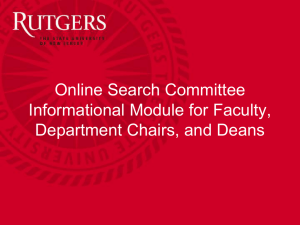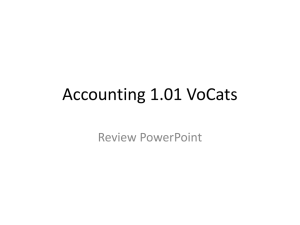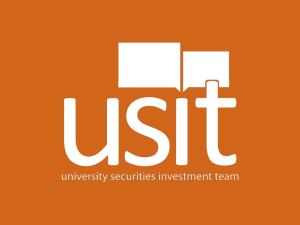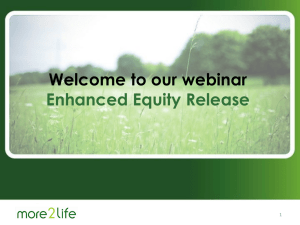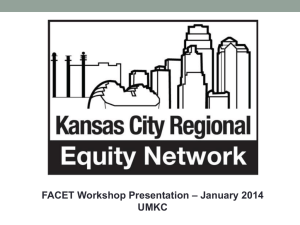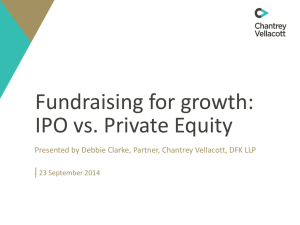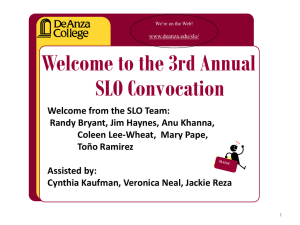Building a World Class Finance Organization
advertisement
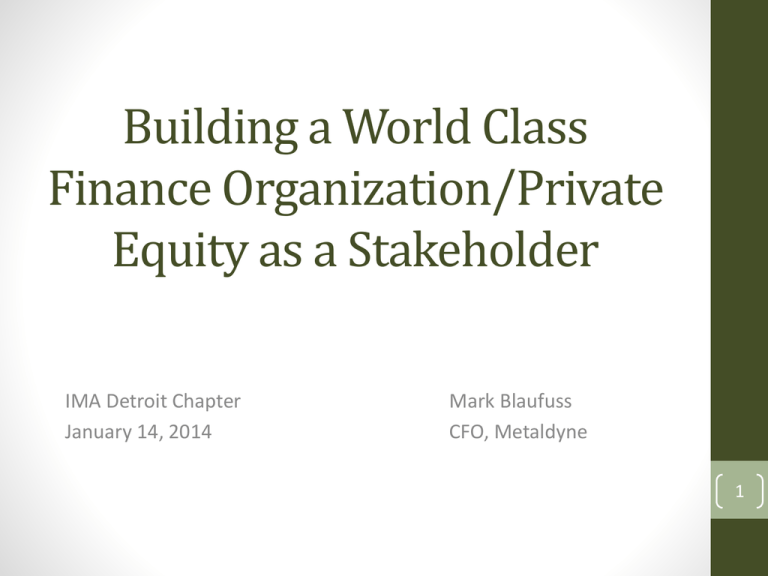
Building a World Class Finance Organization/Private Equity as a Stakeholder IMA Detroit Chapter January 14, 2014 Mark Blaufuss CFO, Metaldyne 1 Overview • Summary Background • Building a World Class Finance Organization • • • • Benefits Characteristics How to Get There Challenges • Private Equity as a Stakeholder • Overview • Characteristics • Key Success Drivers 2 • Education • BA – Michigan State University • Professional Services/Consulting • Pricewaterhousecoopers • Alixpartners Summary Background Summary Background • Small Acquisition/Roll-Up Manufacturers • JPE, Inc. • Stonebridge Industries, Inc. • Larger Multi-National/Private Equity Backed • Axletech International, Inc. • United Components, Inc. • Metaldyne 3 • Understand the stakeholders of the business • • • • Ownership Customers Employees Peers/Management Team Summary Background Summary Background – Approach • Understand role in the organization • Expectations of Stakeholders • Establish key working relationships • Service organization mentality • Understand the parameters to work with • Resources • Relationships 4 Benefits of a World Class Finance Organization 5 • Transforms finance into a valued business partner • Allows management of the trade offs between business partnering and corporate governance • Sets targets for improving finance’s business value • Implements innovative budgeting, forecasting and analysis methods • Reduces the costs of financial services and improves their effectiveness • Identifies the new skills and talents needed to maintain excellence within the organization Building a World Class Finance Organization Benefits of a World Class Finance Organization 6 What Does a World Class Finance Organization Look Like? 7 • Culture • • • • • Highly communicative Fact based management/data driven decisions Promotion of insight/team participation Blameless environment Consistently evolving/transforming Building a World Class Finance Organization Characteristics of a World Class Finance Organization • People • • • • • • Establishing annual goals and measuring against them Cross-training (incl. various departments w/in finance) Job succession Professional development Incentive/Compensation strategies Honesty 8 • Business Partnering • • • • Recognized as bringing value to the organization Fact based assessments Balanced approach to corporate governance Involvement in non-finance activities • Cost Efficient Organization Building a World Class Finance Organization Characteristics of a World Class Finance Organization (cont.) • Understand cost of the organization • Assess/challenge costs, seeking on-going cost reductions • Benefits derived from personnel and system costs • Engaged approach to outside service providers • Benchmark against similar organizations 9 • Processes/Systems • • • • • Automation System reliance Risk based authorizations Documented and defined Data management/retention Building a World Class Finance Organization Characteristics of a World Class Finance Organization • Reporting • Simple and Concise • Timely • 2-3 day close • Bridges with minor “other” • Consistency with operational management 10 How Do You Get There? 11 Building a World Class Finance Organization Adopt a Continuous Improvement Approach 12 People • • • Skills & Capabilities Job Satisfaction High Potential Processes • • • Basic Business Processes Exceptions and Inefficiencies Recurring Errors/Issues Controls • • • Identify Key Controls Segregation of Duties Delegation of Authority Value • • • Value of Deliverables Timeliness of Reporting Overall Cost of the Organization Building a World Class Finance Organization Assess The Finance Organization 13 • If someone cannot explain it to you, they don’t understand it • Ask who uses the report or information that is being produced • What is it used for? • What decisions are made on the report/information? • Look for manual intervention • “I download the report and then make these adjustments to it” • Challenge how effective reviews are Building a World Class Finance Organization Assessment Tips • How often are adjustments made • How many follow-up items are done • Take people off the distribution • “Dye into the system” • Ask “what would you change?” 14 • Document your findings in an organized manner • Consider using a score sheet/template • Helps to record findings consistently • Provides a medium to communicate with the rest of the team • Template becomes the building block for the next phase – Plan and Design Building a World Class Finance Organization Assessment Tips 15 Plan Development • Determine specific goals • Create action steps and champions for each goal • Establish timing and deliverables Tips on Improvement Plans • Leverage assessment template/work • Be realistic – people have day jobs • Avoid ambiguous items – “Improve efficiency” Building a World Class Finance Organization Develop a Plan • Use measurable data as much as possible • Involve the team early and often in the plan • Buy-in and alignment of where the organization is going • Mix in short term and long term goals • Quick wins • Establish scheduled progress updates • Celebrate successes to keep momentum 16 • Arm champions for success • Empowerment • Resources • Project management 101 • Monitor progress • Establish monitoring tool • “Stop light” chart • Set consistent schedule of update meetings Building a World Class Finance Organization Implement • Include problem solving/resolution opportunities • Be supportive • “Pile on” to support requests for information/attendance at meetings • Be personal • Avoid emails – talk to people in person wherever possible 17 • Compare actual results to goals • Understand drivers to variances • Determine the need to keep the item on the plan • More improvement to be garnered? • Cost/benefit of further improvement • Re-assessment Building a World Class Finance Organization Evaluate and Re-Assess • Update initial assessment • New circumstances/challenges • Stakeholder input • Continuous Improvement is Journey, not a Destination 18 • Culture • Multi-national challenges • “This is how we do business here” • Distance • Language • “Tone at the Top” • • • • • Succession planning/career opportunities Competition Compensation Legacy Systems/Issues Company Performance Building a World Class Finance Organization Challenges to Building a World Class Finance Organization 19 Private Equity as a Key Stakeholder 20 Quick Facts Private Equity Firms Headquartered in the U.S.: Buyout/Growth Expansion Funds Currently Fundraising in the U.S.: Private Equity-Backed Companies Headquartered in the U.S.: Employees Hired by U.S. Private Equity-Backed Companies: Last updated: June 2013. Source: PitchBook, PEGCC Analysis. 2,797 firms 320 funds 17,744 7.5 million Private Equity Private Equity – Quick Stats 21 U.S. Private Equity Investment. Source: PEGCC Funds Available for Investment Held by Private Equity Private Equity Private Equity – Here to Stay 22 U.S. Private Equity Investment. Source: PEGCC Private Equity Characteristics • Looking to create value in acquired companies Private Equity • Status Quo post acquisition unlikely • Growth • Revenue • Profitability • Investors Attracted to Stronger than Market Returns • “Private equity delivers significant benefits to its investors and has a proven track record of outperforming other traditional asset classes. As of December 2012, private equity outperformed the S&P 500 Index by 4.3 percentage points, 5.1 percentage points and 7.0 percentage points for three-, five- and ten-year periods. • A review of 151 public pension funds across the U.S. found that private equity delivered an 8.8 percent median 10-year annualized return to pension funds, outperforming the returns of other asset classes (fixed income, listed equity and real estate).” U.S. Private Equity Investment. Source: PEGCC • Financially driven people • EBITDA/Multiples • Leveraged Buy-Outs • Typically Non-Operators – Financial Engineers 23 • Remember Who Has Taken the Risk • The equity investment is likely substantial in the business • Talk the Talk • EBITDA • Multiples • Debt Private Equity Key Success Drivers with Private Equity • Know Your Numbers • Explainable variances • Avoid “surprises” • Robust budget and forecasting • Operate the Operations • Seek approval not guidance • Communication • Establish an agreed upon communication cadence • Performance, Performance, Performance 24 Questions? Mark Blaufuss Chief Financial Officer Metaldyne Corporation markblaufuss@metaldyne.com (734)207-6768 25



